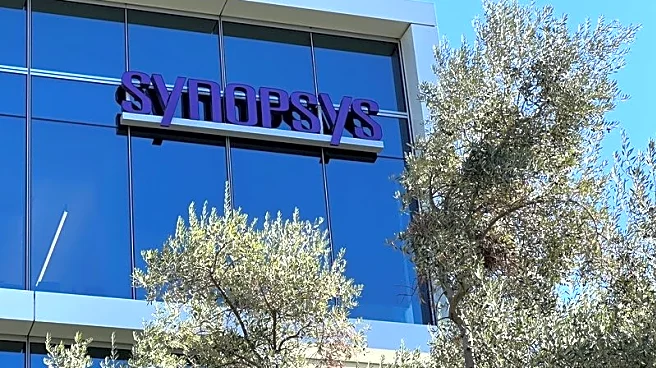What's Happening?
Synopsys has announced a significant workforce reduction, affecting approximately 2,800 employees, which represents 10% of its total workforce. This decision follows the company's $35 billion merger with
engineering design firm Ansys. The layoffs are part of a restructuring plan approved by Synopsys' Board of Directors, aimed at investing in key growth opportunities and driving business efficiencies. The company plans to complete most of the layoffs by the end of fiscal year 2026, with initial notices already issued for facilities in Sunnyvale and Oceanside, California. Synopsys expects to incur pre-tax charges between $300 million and $350 million, including severance and site-closure costs.
Why It's Important?
The layoffs at Synopsys highlight the challenges and strategic shifts companies face following large mergers and acquisitions. By reducing its workforce, Synopsys aims to streamline operations and focus on growth areas, potentially impacting the semiconductor industry and its stakeholders. The restructuring could lead to increased efficiency and innovation, benefiting shareholders and customers. However, the job cuts may have adverse effects on affected employees and local economies, particularly in regions where Synopsys has a significant presence. The move underscores the broader trend of consolidation in the tech industry, as companies seek to enhance competitiveness and expand market reach.
What's Next?
Synopsys plans to complete the majority of the workforce reductions by fiscal year 2026, with ongoing consultations and compliance with local laws. The company will likely focus on integrating Ansys' capabilities to maximize the merger's benefits. Stakeholders, including employees, industry analysts, and investors, will be closely monitoring Synopsys' progress in achieving its strategic goals. The restructuring may prompt reactions from competitors and influence market dynamics in the semiconductor sector. Additionally, Synopsys' approach to managing the transition could serve as a case study for other companies navigating post-merger challenges.












